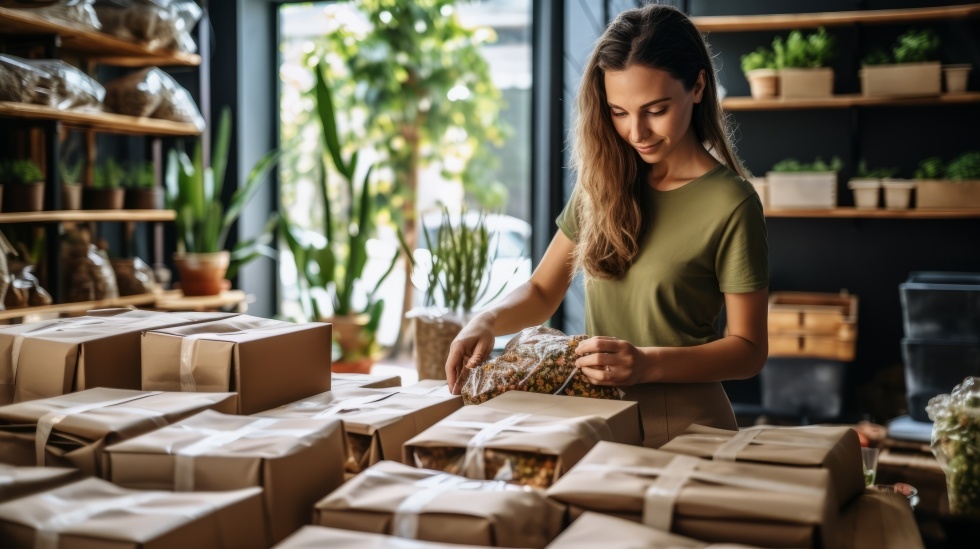Eco-Friendly Packaging Solutions for Global Shipments
An essential aspect of sustainable packaging is minimizing waste throughout the packaging life cycle.

In the ever-evolving landscape of international trade, companies are waking up to the imperative of sustainable practices, and one key aspect that is gaining prominence is sustainable packaging. As the global community becomes increasingly aware of its environmental impact, the import-export sector is reevaluating its packaging strategies to align with eco-friendly principles. This shift is not just a nod to current trends, but a strategic move toward a more responsible and sustainable approach.
The Environmental Impact of Traditional Packaging
Traditional packaging, with its heavy reliance on non-biodegradable materials, has contributed significantly to environmental degradation. From plastic pollution in the oceans to overflowing landfills, the environmental footprint of traditional packaging is undeniable. Recognizing this, companies involved in global shipping are now looking for alternatives to minimize their impact on the planet.
To address this concern, the use of sustainable packaging materials is gaining traction. These materials include biodegradable plastics, recycled paper, and plant-based alternatives. Not only do they reduce environmental impact, but they also provide an opportunity for companies to meet the growing consumer demand for eco-friendly products.
Benefits of Sustainable Materials
- Reduced environmental impact: Biodegradable materials break down naturally, reducing the burden on landfills and minimizing pollution.
- Positive brand image: Companies that adopt sustainable packaging communicate a commitment to environmental responsibility, enhancing their brand image.
- Consumer preference: Eco-conscious consumers are more likely to choose products with eco-friendly packaging, driving market preference.
Packaging Design Innovation
In the quest for sustainable packaging solutions, companies are unleashing their creativity in packaging design. Innovative approaches focus on minimizing waste, optimizing space, and using materials that are both durable and environmentally friendly. This shift not only aligns with global sustainability goals, but also provides a unique opportunity for companies to differentiate themselves in a competitive marketplace.
In the realm of sustainable packaging design, there's a notable trend toward eco-labeling. This is the process of clearly communicating a product's environmental attributes through labeling. Now more than ever, consumers are seeking transparency about the sustainability of the products they purchase. Eco-labeling serves as a powerful tool to communicate a company's commitment to sustainable practices.
Ecolabel Benefits
- Consumer trust: Transparent communication builds trust with increasingly environmentally conscious consumers.
- Market Differentiation: Products with visible ecolabels stand out and attract a growing segment of environmentally conscious consumers.

Top 10 Sustainable Packaging Materials
- Biodegradable plastics: Derived from plant sources, these plastics break down naturally, minimizing environmental impact.
- Recycled paperboard: The use of recycled paperboard reduces the need for virgin raw materials and promotes the principles of the circular economy.
- Mushroom Packaging: Mushroom-based packaging is not only biodegradable but also provides a sustainable alternative to traditional materials.
- Recycled PET (rPET): Repurposing PET plastic into packaging material reduces dependence on virgin plastic.
- Bagasse Packaging: Made from sugarcane fibers, bagasse packaging is both biodegradable and compostable.
- Edible packaging: Innovative solutions include packaging that is not only biodegradable but also edible, reducing waste.
- Seaweed Packaging: Utilizing the properties of seaweed, this material is renewable, biodegradable and abundant.
- Glass Packaging: Highly recyclable and reusable, glass packaging minimizes environmental impact.
- Recycled paperboard: Similar to paperboard, recycled paperboard reduces the need for new paper production.
- Plant-Based Plastics: Derived from renewable resources such as corn or sugar cane, plant-based plastics offer a greener alternative.
The Role of Sustainable Packaging in Green Logistics
The integration of sustainable packaging goes hand in hand with the broader concept of green logistics. Companies are realizing that adopting green packaging is not a stand-alone initiative, but a critical component of a holistic sustainability strategy.
Sustainable packaging helps reduce emissions in the logistics and supply chain. Lighter, more efficient packaging reduces transportation emissions and the overall carbon footprint. This aligns with global initiatives to combat climate change and positions companies as responsible stewards of the environment.
Examples of Eco-friendly Packaging
- Stripe & Stare: Tencel-based underwear with eco-mailer board; uses 95% less water than cotton.
- Sunad: Natural fiber clothing in expandable kraft mailers for minimal material use.
- Hemp Juice: CBD products in recycled boxes with minimal carbon footprint.
- Sheyn: Viennese jewelry studio using 80% recycled material in eco-mailer boxes.
- Origin x Performance: Sustainable sportswear in fully sustainable packaging such as bio-poly mailers.
- Monday's Child: Children's clothing with packaging that doubles as a dollhouse for extended use.
- Vegan Bunny: Vegan candle company using white on kraft mailer boxes with eco-friendly adhesives and inks.
Tips for Brands Transitioning to Eco-packaging
- Transition gradually: Start by testing sustainable packaging options before making a full commitment.
- Order samples: Order samples to verify quality before making larger commitments.
- Consider redesign: If rebranding, align packaging changes with the overall brand redesign.
- Pricing adjustments: Consider adjusting pricing to reflect sustainable packaging costs.
- Small orders: Test new packaging with small orders to gauge team and customer reaction.
- FIFO approach: Implement a "first in, first out" strategy to use existing packaging before transitioning.
- Extend sustainability to products: Consider making the product itself greener along with its packaging.
- Promote eco-packaging: Promote sustainability efforts in marketing campaigns to differentiate the brand.
Conclusion
In conclusion, adopting sustainable packaging solutions isn't just a trend; it's a strategic imperative for companies involved in global shipping. From reducing environmental impact to meeting consumer expectations, the benefits are significant. As the world moves towards a more sustainable future, companies that embrace green practices will not only contribute to global environmental goals, but also secure a resilient and responsible position in the international marketplace. Explore the many opportunities offered by sustainable packaging, where every thoughtfully packaged product becomes a testament to a commitment to a greener, more sustainable world.






Comments 0